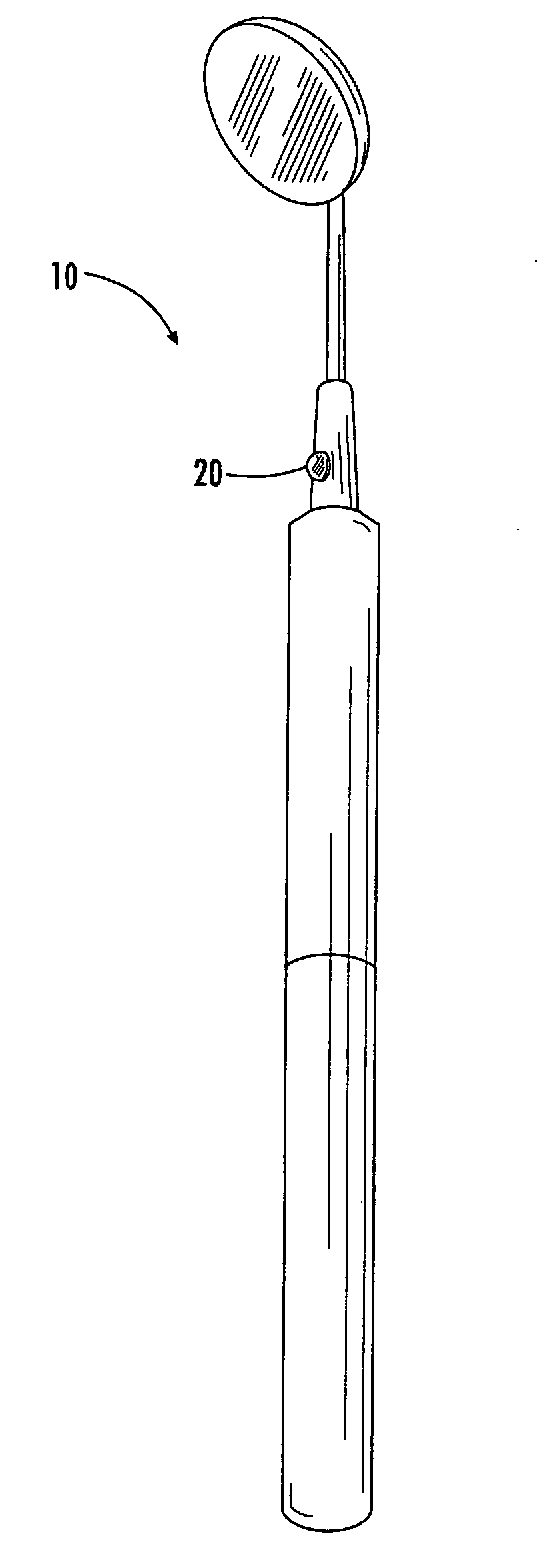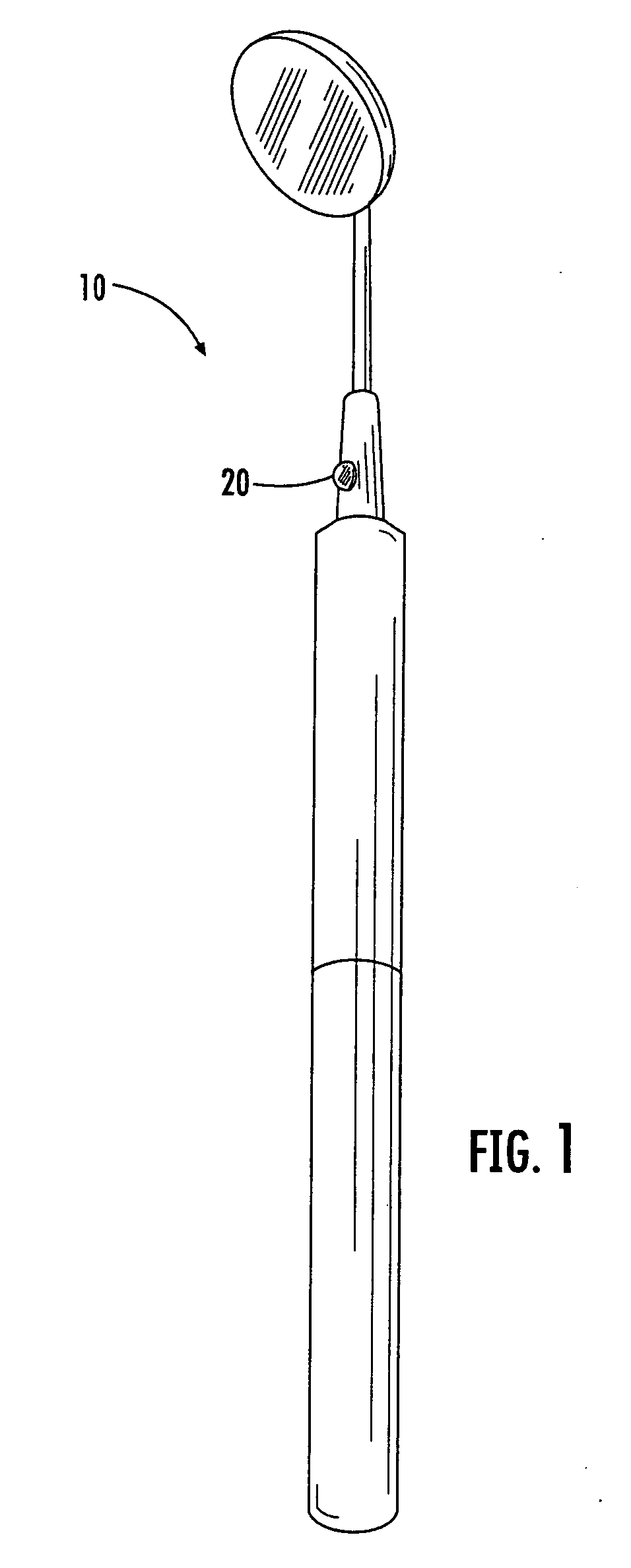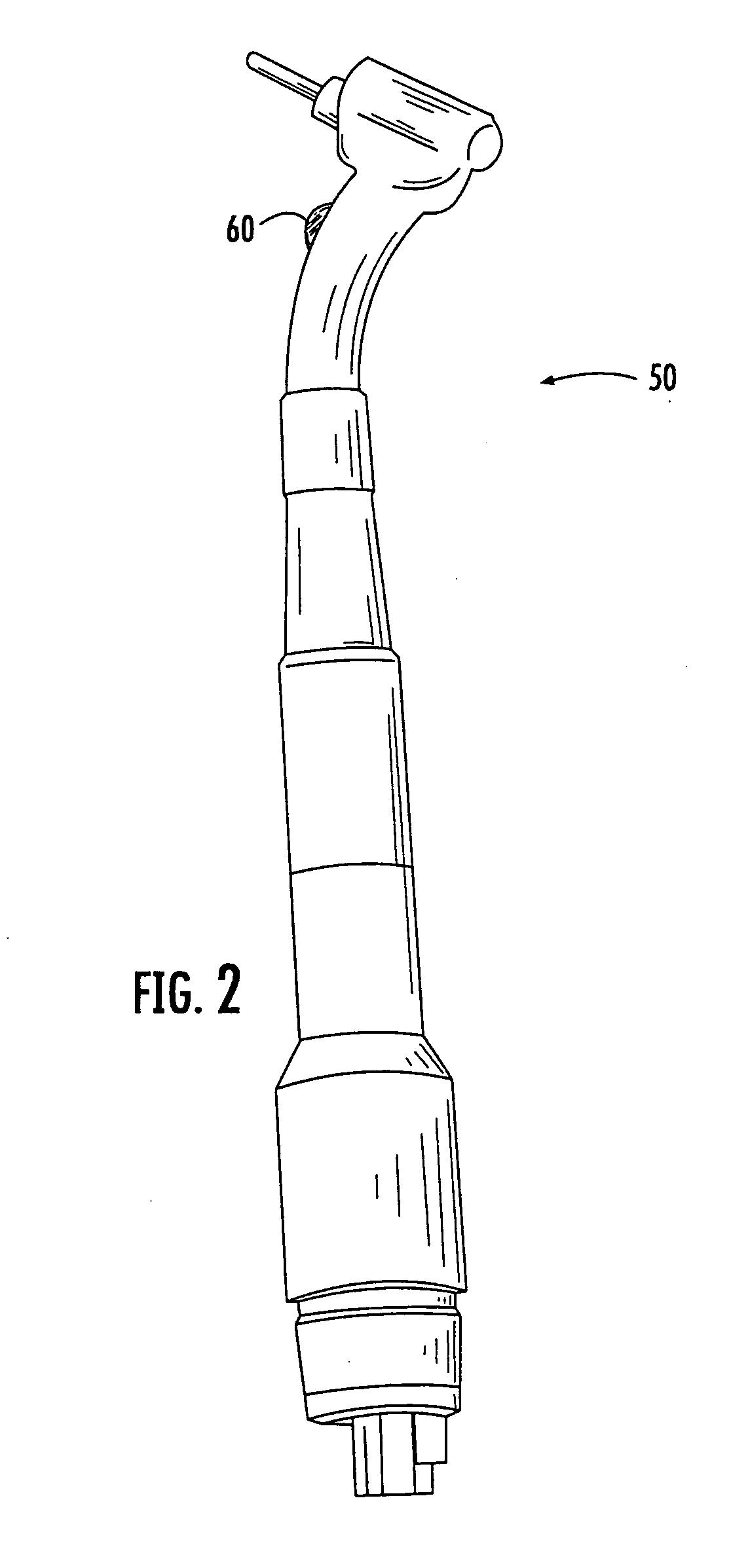Method of treating dental patients with ultraviolet C range light
a technology of ultraviolet c range light and dental patients, which is applied in the field of dental treatments, can solve the problems of high risk of patient cross-contamination, high risk of dental procedures, and patients' septicemia, so as to reduce the risk of bacterial infection for both patients and dentists/oral surgeons, and reduce the risk of bacterial infection
- Summary
- Abstract
- Description
- Claims
- Application Information
AI Technical Summary
Benefits of technology
Problems solved by technology
Method used
Image
Examples
Embodiment Construction
[0014] The present invention now will be described more fully hereinafter with reference to the accompanying drawings, in which preferred embodiments of the invention are shown. This invention may, however, be embodied in many different forms and should not be construed as limited to the embodiments set forth herein; rather, these embodiments are provided so that this disclosure will be thorough and complete, and will fully convey the scope of the invention to those skilled in the art.
[0015] As noted above, the present invention employs UVC radiation in dental treatments. As used herein, “UVC radiation” is intended to encompass ultraviolet radiation having a wavelength of between about 240 and 260 nm. UVC radiation having with a wavelength of between about 243 and 255 nm may be employed in some embodiments; in certain embodiments, a wavelength of between about 245 and 247 nm may be used, as it has been observed that the bacteriocidal effect of the UVC radiation tends to peak at thi...
PUM
 Login to View More
Login to View More Abstract
Description
Claims
Application Information
 Login to View More
Login to View More - R&D
- Intellectual Property
- Life Sciences
- Materials
- Tech Scout
- Unparalleled Data Quality
- Higher Quality Content
- 60% Fewer Hallucinations
Browse by: Latest US Patents, China's latest patents, Technical Efficacy Thesaurus, Application Domain, Technology Topic, Popular Technical Reports.
© 2025 PatSnap. All rights reserved.Legal|Privacy policy|Modern Slavery Act Transparency Statement|Sitemap|About US| Contact US: help@patsnap.com



